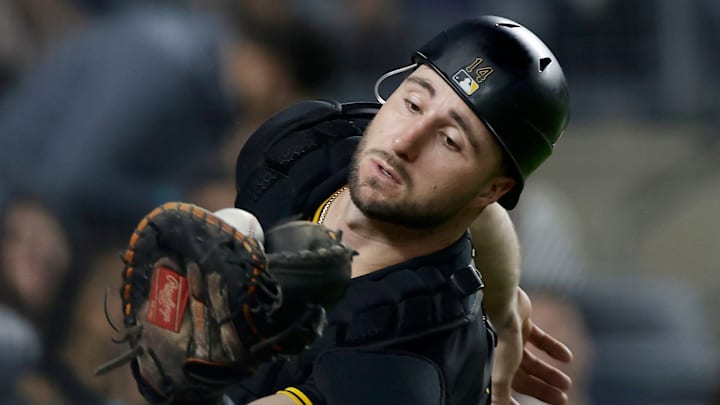Joey Bart
The Pirates had a lack of catching depth early in the year. They broke camp with Henry Davis as the primary backstop with Jason Delay as the second catcher. Endy Rodriguez was set to be out for most of the year because of Tommy John surgery, and Yasmani Grandal opened the year on the IL, too. But when Delay landed on the very same injured list during the first week of April, the Pirates made the move to acquire Joey Bart, who was designated for assignment by the San Francisco Giants.
Bart had long struggled to find his footing in the Major Leagues. Selected second overall by the Giants in the 2018 draft, Bart had just a .623 OPS in 503 plate appearances with the team that selected him. By this point, Bart had been surpassed on the depth chart by 2020 first-rounder Patrick Bailey, offseason signee Tom Murphy, and former Rule 5 draft pick (and Pirates prospect) Blake Sabol.
But since Bart got to Pittsburgh, he’s started to look like the power-hitting catcher many expected him to develop into when he was drafted. Through 282 plate appearances, Bart slashed .265/.337/.462 with 13 homers. Bart has significantly cut his strikeout rate down, going from 35.4% with the Giants to just 25.9% this year. His walk rate has also taken a huge step forward, from 6.4% to 7.8%. He has hit more home runs with the Pirates than he ever did with the Giants (11) and finished the season with a .347 wOBA and 121 wRC+.
Bart made quality contact at a high rate this season with a 9.4% barrel rate. Expected numbers paint there could be some regression in Bart’s future, but not a whole lot. He posted a .333 xwOBA and .444 xSLG%. Both marks were still above league average, and would still make him one of the most productive catchers in the league with the bat over a full season.
Bart hasn’t been great behind the plate in Pittsburgh; he put up -4 defensive runs saved and -3 framing runs after being acquired. He is quick on the draw, though, and his 1.99 second poptime is slightly better than average. Bart has a strong throwing arm, as his throws average out at 84.5 MPH.
Bart may have single-handedly kept the Pirates’ season alive much longer than it would have lasted without him. Davis did not take another step forward, as many expected him to, and Grandal did not provide much more than a solid secondary catching option. Without Bart, the Pirates would have been heavily relying on Delay, who, while not a horrible player, is mostly valuable in a secondary catcher role.
